-
 Bitcoin
Bitcoin $83,622.6306
-1.03% -
 Ethereum
Ethereum $1,589.6945
-1.99% -
 Tether USDt
Tether USDt $1.0000
0.01% -
 XRP
XRP $2.0889
-1.88% -
 BNB
BNB $580.0353
-0.85% -
 Solana
Solana $126.7178
-2.33% -
 USDC
USDC $1.0000
-0.01% -
 TRON
TRON $0.2506
-0.43% -
 Dogecoin
Dogecoin $0.1537
-3.31% -
 Cardano
Cardano $0.6091
-4.20% -
 UNUS SED LEO
UNUS SED LEO $9.3201
-0.87% -
 Chainlink
Chainlink $12.2503
-3.06% -
 Avalanche
Avalanche $19.0105
-5.53% -
 Stellar
Stellar $0.2359
-1.88% -
 Toncoin
Toncoin $2.8505
-1.13% -
 Shiba Inu
Shiba Inu $0.0...01170
-2.63% -
 Sui
Sui $2.0950
-4.30% -
 Hedera
Hedera $0.1569
-4.99% -
 Bitcoin Cash
Bitcoin Cash $319.8208
-1.32% -
 Litecoin
Litecoin $75.7238
-2.04% -
 Polkadot
Polkadot $3.5266
-3.99% -
 Dai
Dai $1.0001
0.01% -
 Bitget Token
Bitget Token $4.2562
-1.04% -
 Hyperliquid
Hyperliquid $15.1159
-4.03% -
 Ethena USDe
Ethena USDe $0.9992
0.01% -
 Pi
Pi $0.6455
-12.89% -
 Monero
Monero $215.1633
0.19% -
 Uniswap
Uniswap $5.1866
-3.08% -
 OKB
OKB $51.9360
-0.45% -
 Pepe
Pepe $0.0...06972
-4.89%
A Complete Tutorial on Building Efficient GPU Mining Equipment
For efficient GPU mining, choose high hash rate GPUs, a motherboard with ample PCI-e slots, a properly sized PSU, and a well-ventilated case to optimize performance and profitability.
Apr 11, 2025 at 01:07 am
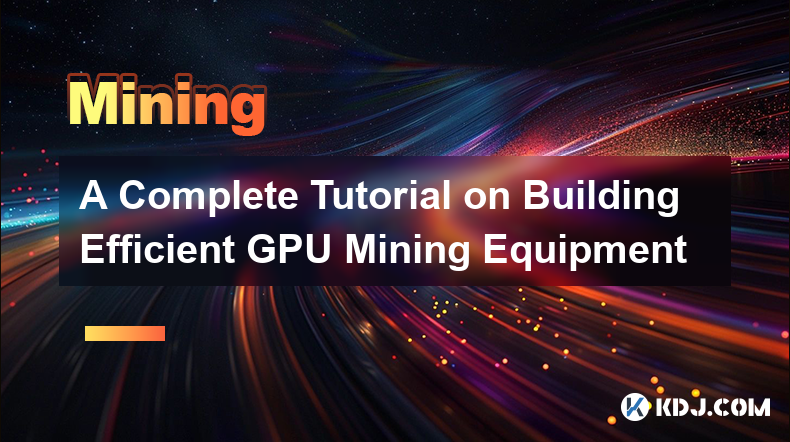
Understanding GPU Mining Hardware
GPU mining, particularly for cryptocurrencies like Ethereum (before the merge), relies heavily on the processing power of Graphics Processing Units (GPUs). Building efficient equipment requires careful consideration of several components. The core components are the GPUs themselves, the motherboard, the power supply unit (PSU), and the case. Choosing the right components is crucial for maximizing profitability and minimizing energy consumption. Ignoring any of these could lead to inefficient mining and wasted resources.
Selecting the Right GPUs
The heart of your mining rig is the GPU. The choice depends on your budget and the specific cryptocurrency you intend to mine. High hash rate GPUs, meaning those that can perform many calculations per second, are generally preferred. Consider factors like memory (VRAM) capacity; more VRAM often translates to better performance. AMD and Nvidia both produce GPUs suitable for mining, each with its own strengths and weaknesses. Researching benchmarks for different cards is vital before purchasing.
Choosing the Motherboard
The motherboard is the backbone of your mining rig, connecting all the components. It needs to have enough PCI-e slots to accommodate all your GPUs. The number of slots directly impacts how many GPUs you can use simultaneously. Look for motherboards specifically designed for mining as they often have features optimized for this purpose, such as improved power delivery and stability. Pay attention to the chipset and its capabilities.
Power Supply Unit (PSU) Considerations
The PSU is critical; it provides power to all components. Underpowering your rig can lead to instability and even damage. Overpowering is also undesirable, as it's inefficient and adds unnecessary cost. Calculate the total power draw of all your components, including GPUs, motherboard, and other peripherals. Choose a PSU with enough wattage and sufficient amperage on the relevant PCI-e power connectors. High-quality PSUs are recommended for reliability.
Case Selection and Cooling
The case houses all the components. For GPU mining, adequate airflow is paramount to prevent overheating. Choose a case with good ventilation, potentially with multiple fans. Consider a rack-mountable case for easier management if you're building multiple rigs. Effective cooling prevents performance throttling and extends the lifespan of your hardware. Poor cooling can significantly reduce your mining efficiency.
Assembling the Mining Rig: A Step-by-Step Guide
- Prepare your workspace: Ensure a clean and organized workspace with anti-static precautions.
- Install the CPU (if necessary): Some mining motherboards may require a CPU, even if it's a low-power one.
- Mount the GPUs: Carefully insert the GPUs into the PCI-e slots on the motherboard.
- Connect the power cables: Connect the power cables from the PSU to the motherboard and GPUs.
- Install the other components: Connect other components like RAM (if required), storage drives, and fans.
- Close the case: Securely close the case and connect any external cables.
- Connect to the network: Connect your rig to the internet using an Ethernet cable for stable connectivity.
- Install mining software: Install the appropriate mining software for your chosen cryptocurrency.
- Configure the mining software: Configure the software with your wallet address and mining pool details.
Operating System and Mining Software
While some miners opt for a minimal setup, others prefer a full operating system. Linux distributions are commonly used for their stability and efficiency in mining. Windows can also be used, but it might be less efficient. Choose a mining software that is compatible with your GPUs and the cryptocurrency you wish to mine. Popular options include, but aren't limited to, NiceHash, TeamRedMiner, and others. Proper software configuration is vital for optimal performance.
Monitoring and Maintenance
Regular monitoring is crucial. Use software to monitor GPU temperatures, hash rates, and power consumption. Overheating can damage your GPUs, so keep an eye on temperatures and adjust cooling as needed. Regular cleaning of dust from the case is essential for maintaining optimal airflow and preventing overheating. Software updates for both the operating system and mining software should be performed regularly.
Power Consumption and Cost Optimization
GPU mining is energy-intensive. Monitor your power consumption carefully to estimate operating costs. Consider factors like electricity prices and the profitability of the cryptocurrency you're mining. Explore options to reduce energy consumption, such as using energy-efficient GPUs and optimizing mining software settings. Investing in efficient cooling solutions can indirectly reduce energy consumption.
Frequently Asked Questions
Q: What are the best GPUs for mining in 2024?
A: The best GPUs for mining are constantly evolving. Check current benchmarks and reviews to determine the most efficient and profitable options for your chosen cryptocurrency. Factors like hash rate, power consumption, and price all play a role.
Q: How much does it cost to build a GPU mining rig?
A: The cost varies significantly depending on the number and type of GPUs, the quality of other components, and the overall configuration. Expect a considerable investment, potentially ranging from several hundred to several thousand dollars.
Q: Is GPU mining profitable?
A: Profitability depends on several factors, including cryptocurrency prices, electricity costs, GPU hash rates, and mining difficulty. It's crucial to conduct thorough research and calculate potential profits before investing in a mining rig. Profitability is not guaranteed.
Q: What are the risks associated with GPU mining?
A: Risks include hardware failure, fluctuating cryptocurrency prices, increasing mining difficulty, and high electricity costs. The market is volatile, and returns are not guaranteed. Thorough research and risk assessment are essential.
Q: How much electricity does a GPU mining rig consume?
A: The electricity consumption varies greatly depending on the number and type of GPUs, and other components. It's crucial to calculate the total power draw to estimate electricity costs. This is a significant ongoing expense.
Q: What is the lifespan of a GPU used for mining?
A: The lifespan of a GPU used for mining can be shorter than one used for gaming due to the constant, high-intensity workload. Proper cooling and maintenance are crucial for extending its lifespan. Expect potential degradation over time.
Disclaimer:info@kdj.com
The information provided is not trading advice. kdj.com does not assume any responsibility for any investments made based on the information provided in this article. Cryptocurrencies are highly volatile and it is highly recommended that you invest with caution after thorough research!
If you believe that the content used on this website infringes your copyright, please contact us immediately (info@kdj.com) and we will delete it promptly.
- Public Companies Added Nearly 100,000 Bitcoin To Their Balance Sheets During Q1 2025
- 2025-04-16 07:15:16
- Amidst the Stormy Seas of the Crypto World, a New Titan Emerges—BlockDAG
- 2025-04-16 07:15:16
- Bitcoin (BTC) reclaims $85,000, setting the stage for altcoins to rally
- 2025-04-16 07:15:14
- The Pi Network token price has increased by more than 14% over the past week.
- 2025-04-16 07:15:14
- A wave of capital is flowing out of Ethereum [ETH] and into Tron [TRX]
- 2025-04-16 07:05:14
- Figment to power 3iQ's newly approved Solana exchange-traded fund (ETF)
- 2025-04-16 07:05:14
Related knowledge
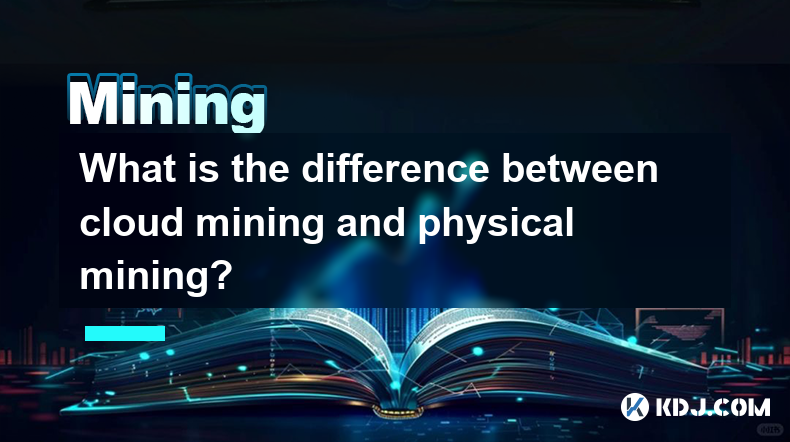
What is the difference between cloud mining and physical mining?
Apr 16,2025 at 01:49am
What is the difference between cloud mining and physical mining? In the world of cryptocurrencies, mining is the process by which new coins are generated and transactions are verified and added to the blockchain. There are two primary methods of mining: cloud mining and physical mining. Understanding the differences between these two approaches can help...
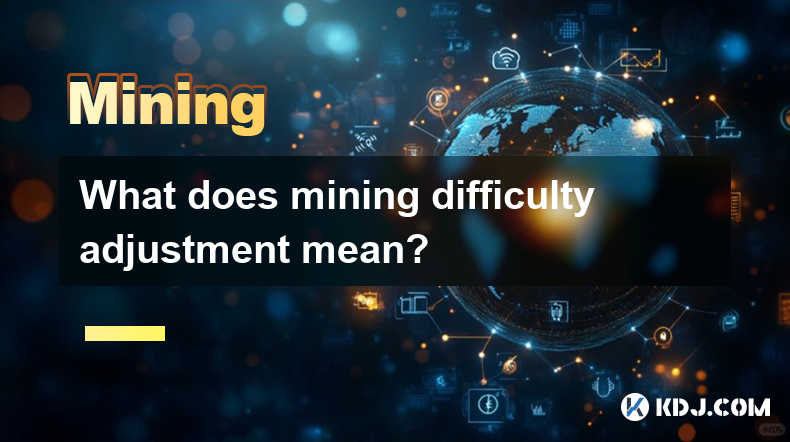
What does mining difficulty adjustment mean?
Apr 16,2025 at 12:42am
What does mining difficulty adjustment mean? Mining difficulty adjustment is a crucial mechanism in blockchain networks, particularly in Proof of Work (PoW) systems like Bitcoin. It ensures that the rate at which new blocks are added to the blockchain remains consistent, despite fluctuations in the total computational power (hash rate) of the network. T...
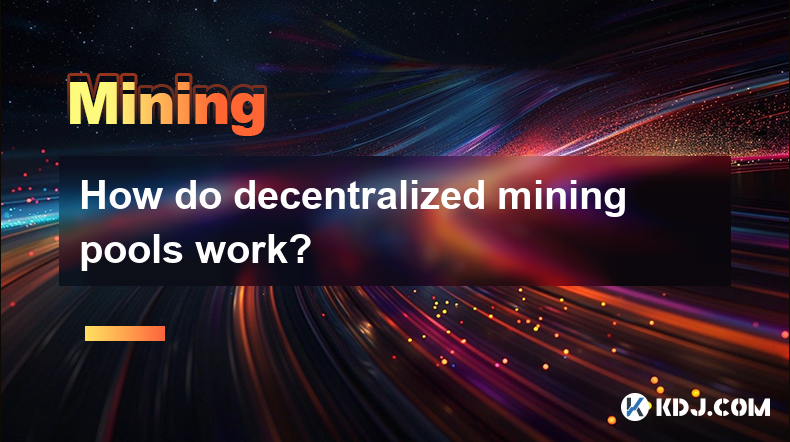
How do decentralized mining pools work?
Apr 16,2025 at 05:42am
Decentralized mining pools represent a significant evolution in the world of cryptocurrency mining, offering a more democratic and transparent approach compared to traditional centralized pools. In this article, we will explore the mechanics of decentralized mining pools, their benefits, and how they operate within the cryptocurrency ecosystem. What are...
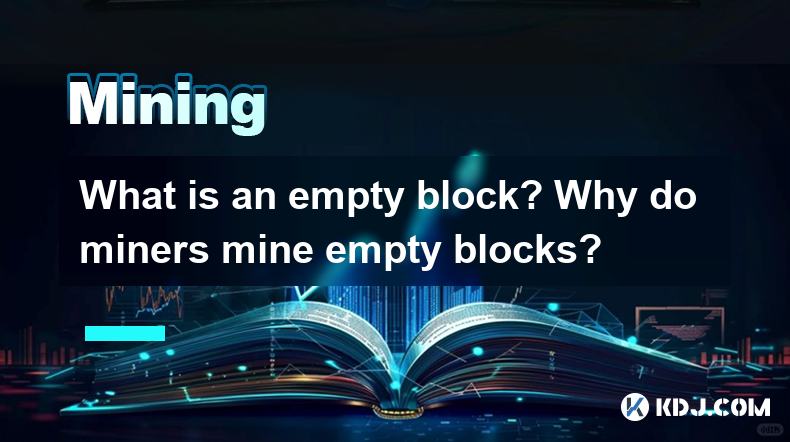
What is an empty block? Why do miners mine empty blocks?
Apr 16,2025 at 01:28am
What is an Empty Block?An empty block in the context of blockchain technology, particularly in cryptocurrencies like Bitcoin, refers to a block that contains no transactions other than the coinbase transaction. The coinbase transaction is a special transaction in which new bitcoins are generated and awarded to the miner who successfully mines the block....

What is the KawPow algorithm?
Apr 16,2025 at 06:43am
The KawPow algorithm is a proof-of-work (PoW) consensus mechanism specifically designed for the Ravencoin blockchain. It evolved from the earlier X16R and X16RV2 algorithms, aiming to enhance the security and efficiency of the mining process. KawPow was introduced to address the issues associated with ASIC (Application-Specific Integrated Circuit) miner...
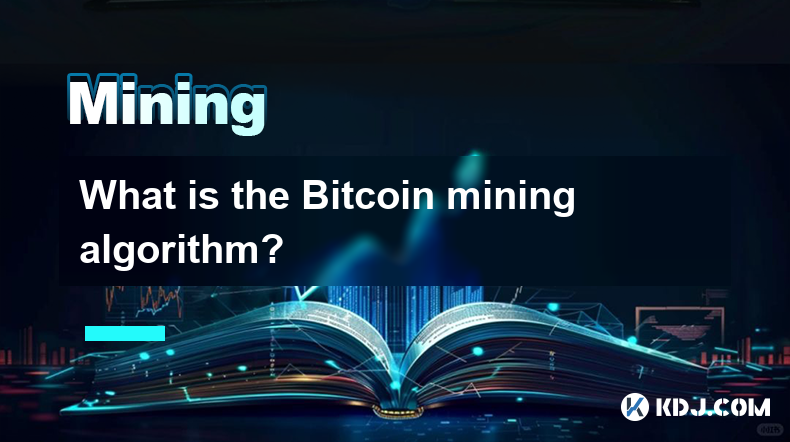
What is the Bitcoin mining algorithm?
Apr 15,2025 at 08:00pm
What is the Bitcoin Mining Algorithm? Bitcoin mining is a crucial process that maintains the integrity and security of the Bitcoin network. At the heart of this process lies the Bitcoin mining algorithm, which is responsible for verifying transactions and adding them to the blockchain. Understanding this algorithm is essential for anyone interested in t...

What is the difference between cloud mining and physical mining?
Apr 16,2025 at 01:49am
What is the difference between cloud mining and physical mining? In the world of cryptocurrencies, mining is the process by which new coins are generated and transactions are verified and added to the blockchain. There are two primary methods of mining: cloud mining and physical mining. Understanding the differences between these two approaches can help...

What does mining difficulty adjustment mean?
Apr 16,2025 at 12:42am
What does mining difficulty adjustment mean? Mining difficulty adjustment is a crucial mechanism in blockchain networks, particularly in Proof of Work (PoW) systems like Bitcoin. It ensures that the rate at which new blocks are added to the blockchain remains consistent, despite fluctuations in the total computational power (hash rate) of the network. T...

How do decentralized mining pools work?
Apr 16,2025 at 05:42am
Decentralized mining pools represent a significant evolution in the world of cryptocurrency mining, offering a more democratic and transparent approach compared to traditional centralized pools. In this article, we will explore the mechanics of decentralized mining pools, their benefits, and how they operate within the cryptocurrency ecosystem. What are...

What is an empty block? Why do miners mine empty blocks?
Apr 16,2025 at 01:28am
What is an Empty Block?An empty block in the context of blockchain technology, particularly in cryptocurrencies like Bitcoin, refers to a block that contains no transactions other than the coinbase transaction. The coinbase transaction is a special transaction in which new bitcoins are generated and awarded to the miner who successfully mines the block....

What is the KawPow algorithm?
Apr 16,2025 at 06:43am
The KawPow algorithm is a proof-of-work (PoW) consensus mechanism specifically designed for the Ravencoin blockchain. It evolved from the earlier X16R and X16RV2 algorithms, aiming to enhance the security and efficiency of the mining process. KawPow was introduced to address the issues associated with ASIC (Application-Specific Integrated Circuit) miner...

What is the Bitcoin mining algorithm?
Apr 15,2025 at 08:00pm
What is the Bitcoin Mining Algorithm? Bitcoin mining is a crucial process that maintains the integrity and security of the Bitcoin network. At the heart of this process lies the Bitcoin mining algorithm, which is responsible for verifying transactions and adding them to the blockchain. Understanding this algorithm is essential for anyone interested in t...
See all articles























































































